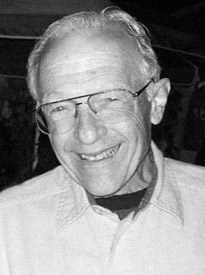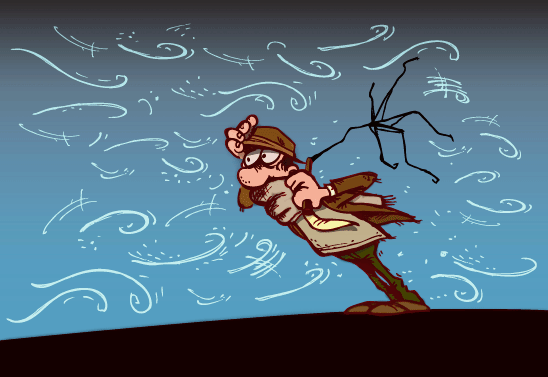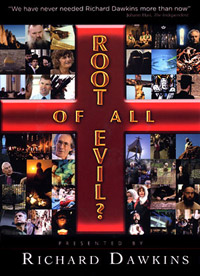FREE AUDIO DOWNLOAD
a Chapter from The History of Science
This is one of Dr. Michael Shermer’s finest college courses that he taught in his 20-year tenure as a college professor, presenting his sweeping visage of science, its history, philosophy, and impact, particularly over the past 500 years. In this free audio download of Lecture 1, Dr. Shermer answers the questions What is History? What is Science? and What is the History of Science? Along the way he shows that the facts never just speak for themselves but must be interpreted through hypotheses, theories, models, paradigms, and even worldviews, and that science is a social process conducted by people with a host of cognitive biases, and how this fact led to the development of a rigorous scientific method to help avoid these psychological shortcomings to our observations and conclusions.
DOWNLOAD the sample MP3 (65MB)


Dr. Ray Hyman
Amaz!ng Interviews
This week Skepticality releases the entertaining wealth of recent audio Derek recorded at the James Randi Educational Foundation’s “Amazing Meeting 7” conference in sunny Las Vegas.
The diverse nature of modern skepticism is well represented in interviews featuring Jennifer Ouellette (author of The Physics of the Buffyverse) and magician Michael Goudeau (executive producer of Penn & Teller’s Bullshit!). Best of all, Skepticality shares thoughts from one of the founding fathers of the skeptical movement: psychologist Dr. Ray Hyman.
In this week’s eSkeptic, Gary J. Whittenberger investigates whether the prayer of Georgia State Governor Sonny Perdue correlates to an increase in precipitation and how likely it was to have actually caused the increase.
Gary Whittenberger is a free-lance writer and psychologist, living in Tallahassee, Florida. He received his doctoral degree from Florida State University after which he worked for 23 years as a psychologist in prisons. He has published many articles on science, philosophy, psychology, and religion, and their intersection.

A Governor’s Prayer for Rain
An Empirical Analysis of a Supernatural Claim
by Gary J. Whittenberger
On Tuesday, November 13, 2007, Sonny Perdue, the Governor of Georgia, led a group of approximately 250 persons, including many state officials, in a prayer for rain on the steps of the state capitol in Atlanta.1 Georgia had been suffering an extreme drought, and the level of Lake Lanier, an important water reservoir near Atlanta, had been decreasing dramatically over several months. Governor Perdue believed that a divine intervention was necessary and so he boldly asked God to bring rain. Fully expecting his prayer to be effective, Perdue said “Hopefully we will be better conservators of the blessings God’s given us as he gives us more [rain].”1 At the time and place when the state’s highest ranking officer pleaded to the Almighty, it was cloudy, but it did not rain. However, sure enough, the next day there was light rain in Atlanta and much rain came to the area over the next couple of months. Many Georgians considered Perdue a hero and thought that his prayer had influenced God to increase rainfall to the drought stricken vicinity of Atlanta. But did it? Although there may have been constitutional problems with the Governor’s prayer,2 the purpose of this investigation is to determine whether the prayer was correlated with an increase in rain, and if so, how likely it was to have caused the increase.
Methodology
item of interest…
“An excerpt of this show is the single most popular story we’ve ever put on our show in over ten years on the air. We were deluged with email. Flooded. Overwhelmed. Somehow, against all common sense, Julia is making something funny that has no business being funny. So buy this DVD … if you dare.” –Ira Glass, host of public radio’s This American Life.
ORDER the DVD
ORDER the CD
When asked by reporters what outcome he expected from his prayer, Governor Perdue replied “God can make it rain tomorrow, he can make it rain next week or next month.”1 Although this is rather vague, I decided to give Perdue some leeway and use his own words to help define a time period to be assessed. The Governor presented his prayer on November 13, 2007, so “next month” was December 2007. It seemed reasonable to examine the amount of rainfall during the 48 days after the day of prayer, from November 14 through December 31, 2007, which I shall call the “post-prayer period.” For comparison, a “pre-prayer period” was defined as the 48 days from September 26 through November 12, 2007. The day of prayer itself was not included in either of these pre- and post-periods since part of that day fell before the prayer and part of it fell after the prayer, and only daily rainfall totals, not hourly totals, were selected for use in this study. Because the Governor presented his prayer on the steps of the capitol in Atlanta and he was especially concerned with that city and the surrounding area, I decided to use rainfall data from one site — the Atlanta Hartsfield International Airport. Rain is collected and measured at numerous sites in and around Atlanta, but I thought that the data from the airport site would be as good or better than the data from the other sites since accurate weather information is essential to the safety of airline traffic.
I obtained daily rainfall totals from a well-respected website, The Weather Source,3 for a time period of a little more than ten years from August 30, 1997 through January 27, 2008. There were no missing data points for this time period. The daily rain totals from the website are reported to the nearest hundredth of an inch, and for some days a “T” is recorded to indicate a “trace amount.” In order to ensure that every day had a numerical value, each “T” was converted to “.005” inches.
The total amount of rain during any 48-day period was calculated by simply summing the daily totals for the time period. Thus, the amounts of rainfall during the 48-day pre-prayer period (A) and during the 48-day post-prayer period (B) were determined. From these two numbers, two change scores were then calculated: (1) the amount of rain in the post-prayer period minus the amount of rain in the pre-prayer period (B-A), and (2) the percent change in the amount of rainfall from the pre-prayer to the post-prayer period (100 (B-A)/A).
Similar calculations were made for “control days,” which were defined as days within about the last ten years on which Mr. Perdue had not delivered an official public prayer at the capitol for rain to come to the Atlanta area. These control days were the 3,631 days from October 17, 1997 through September 25, 2007. Thus, for each of these days, the amounts of rainfall during the 48 days before (X) and 48 days after the control day (Y) were calculated by summing the daily totals for the respective time periods. For each of the control days, two change scores were then calculated: (1) the amount of rain in the 48-day post-control period minus the amount of rain in the 48-day precontrol period (Y-X), and (2) the percent change in the amount of rainfall from the pre-control to the post-control period (100 (Y-X)/X).
Two special samples of control days were examined. One was the sample of all control days occurring in the months of November from 1997 through 2006. Another was the sample of all control days with 48-day pre-control periods having low rainfall. These particular “low rainfall” pre-control periods had rainfall at the same level as, or at a lower level than, the actual 48-day pre-prayer period.
Results
The intuitions of many Atlanta residents were correct. There was an increase in rainfall from the 48-day preprayer period to the 48-day post-prayer period. The amount of rain in the former period was 2.485 inches and the amount in the latter was 5.765 inches, an increase of 132%! So, the Governor’s prayer was correlated with an increase in rain, an apparently large one.
Although upon first reflection, this 132% increase in rainfall seems impressive, it seems less so after comparing it to changes in rainfall for the non-prayer or control days. For the 3,631 control days, the change in rainfall from pre-control period to postcontrol period was a decrease for 49.8% of the control days, no change for .2% of the days, and an increase for 50% of those days. Thus, if any nonprayer (control) day were selected at random, we could expect this day to be followed half of the time by an increase in rain from the pre- to postperiod. So, any increase in rain after a prayer cannot be considered extraordinary at all.
item of interest…
In this two-part documentary, Oxford Professor Richard Dawkins examines how religious faith is gaining ground in the face of rational, scientific truth. The program takes you to some of the world’s religious hot-spots, both in America and the Middle East. Dawkins meets with religious leaders and their followers, as well as scientists and skeptics to examine the power of religion. READ more…
ORDER the DVD
For the 3,631 control days, there was an increase in rainfall of 132% or more from pre- to post-period in 10.8% of the cases. So, although increases of 132% in rainfall are somewhat infrequent, they are not rare. Any increase in rainfall after a nonprayer day is likely to be as great or greater than the increase after the Perdue prayer day 21.6% of the time. Stated another way, the amount of rainfall increase following the Governor’s prayer is similar to what we would find about a fifth of the time for increases following days of no prayer from Georgia’s highest official.
To control for time of the year or season and its role in the frequency of increases in rainfall, I examined a subset of all control days, i.e., the set of nonprayer days occurring only in the month of November from 1997 through 2006. Of the 300 days which fell in this November subset, 17% were associated with increases in rainfall of 132% or greater from pre- to post-control periods. So, time of the year or season did play some role. Compared to all nonprayer days, it was about 1.5 times more likely for an increase in rainfall of at least 132% to occur after November nonprayer days (17% vs. 10.8%).
To control for the tendency for the amount of change in rainfall after a control day to be related to the amount of rainfall in the pre-control period, I noted that the total rainfall in the 48-day pre-prayer period was only 2.485 inches. Of the 3,631 nonprayer or control days, only 297 (8.2%) had pre-control periods with 2.485 inches of rain or less. Thus, the 48-day preprayer period could be considered even by a layman to be one of “drought.” So how likely was a large increase in rain — an increase of at least 132% — to occur following a nonprayer day preceded by a 48-day period of low rainfall, in which 2.485 inches of rain or less fell? Such large increases in rainfall followed 48-day periods of low rainfall in 49.8% of the relevant control days! For purposes of comparison, the 297 of the 3,631 control days (8.2%) with the highest rainfall in the pre-control periods were also examined. Of these, not a single one was followed by an increase in rainfall of 132% or more! Thus, a rather large increase in rainfall (≥132%) is likely to follow a low rain period about half the time, and to follow a high rain period none of the time when a governor’s prayer is not involved.
Discussion
The results of this study show that Governor Perdue’s official public prayer for rain on November 13, 2007 was followed by a 132% increase in rainfall from the 48-day period prior to his day of prayer to the 48-day period after his day of prayer. However, no evidence was found for a causal relationship between the prayer and the increase in rain. The Governor did not produce the increase, despite the claims of many that he did! This is clear from comparing the outcome of his day of prayer to the outcomes of nonprayer days. Nonprayer days were likely to be followed by rainfall increases equal to or greater than what followed the Governor’s prayer day approximately 11% of the time for all nonprayer days, 17% of the time for nonprayer days in November, and 50% of the time for nonprayer days preceded by periods of low rainfall. Any belief that the Governor produced an increase in rain by his prayer on November 13, 2007 can be considered to be wishful thinking.
What would it take to reject the null hypothesis that prayer does not cause rain (and therefore conclude that it does)? If the rainfall increase after the prayer had been greater than any increase seen after any nonprayer day in the previous ten years, would that evidence have been sufficient to reject the null hypothesis? An increase of more than 1400% would have been required since this increase actually occurred from pre- to post-control periods for the date of September 13, 2002. This is an increase more than ten times greater than the increase occurring after Perdue’s prayer. But even then, just because a record would have been broken, would that have necessarily meant that the prayer was the cause of the rainfall increase? Suppose that the increase in rainfall after the prayer day had been twice the greatest increase ever observed after a nonprayer day in the last ten years, i.e., an increase of 2800%? Would we consider that evidence enough to reject the null hypothesis? It is hard to say. Extraordinary claims regarding the magnitude of changes which occur naturally are quite different from extraordinary claims regarding events which have base rates of zero (e.g., a resurrection, virgin birth, a man passing through a wall, etc.).
Perhaps a single blockbuster recordbreaking increase in rain after a prayer will never be enough, nor should be enough, to justify the inference that the prayer caused the increase. Perhaps replication is needed. If Governor Perdue were asked to deliver several prayers for rain, not on a schedule of his own choosing, but on a random schedule, and each time his prayer was followed by a record-breaking increase in rain, then we might have the extraordinary evidence required to believe this extraordinary claim. Until then, we should remain skeptical.
References
- Salzer, James and Jim Galloway. 2007. “Perdue Asks Crowd to ‘Pray Up a Storm’: Drought is Message from God to Conserve Better, Governor Says.” Atlanta Journal and Constitution, November 13. Available at www.ajc.com/metro/content/metro/stories/2007/11/13/rainprayer_1114.html
- Youthment, Steve. 2007. “AFS Protests Governor Perdue’s Prayer Meeting.” Atlanta Freethought News, 13(12): 3.
- The Weather Source. 2008. Available at www.weather-source.com
The latest additions to MichaelShermer.com and SkepticBlog.org

NEW ON SKEPTICBLOG.ORG
Homo religious
Michael discusses why people are religious and suggests that we evolved to be that way.
• READ the blog post •












